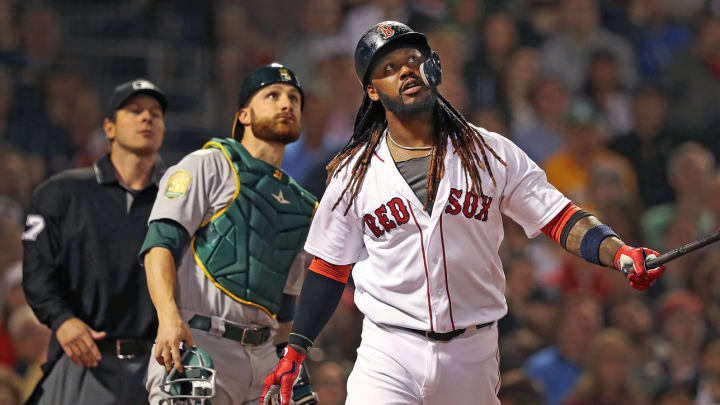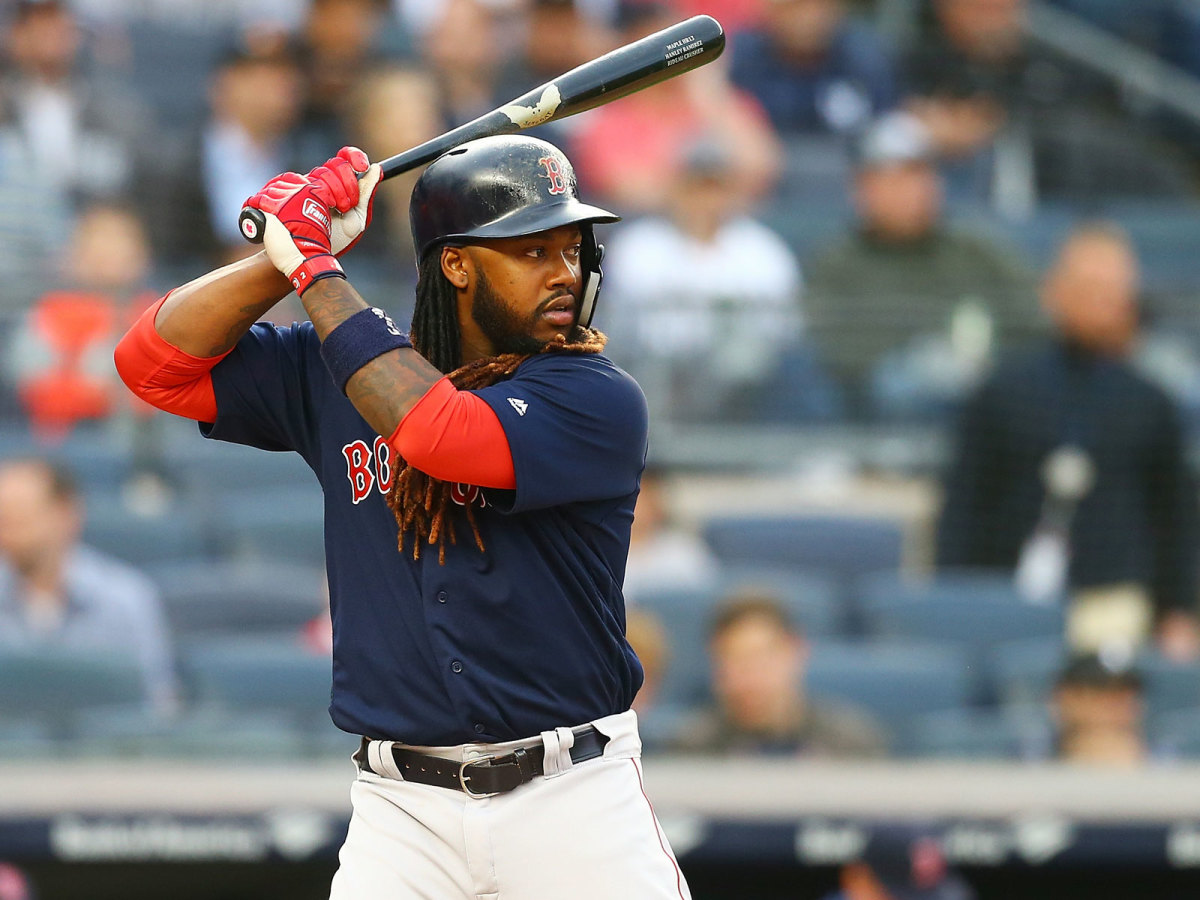The Red Sox Ran Out of Patience With the Underperforming Hanley Ramirez

The bell has tolled for Hanley Ramirez in Boston. On Friday, the team announced that it was designating the veteran first baseman for assignment to make room on the 25-man roster for the returning Dustin Pedroia. The move ends Ramirez’s uneven Red Sox tenure after three-plus seasons and with tens of millions still owed to him this year, and comes as a mild surprise for a team atop the AL East and owning baseball’s best record at 34–16.
Then again, given Ramirez’s sagging numbers, this move shouldn’t be entirely unexpected. Despite a hot start to the season (.330/.400/.474 in April in 110 plate appearances), a brutal May (.163/.200/.300) and a hitless streak currently at 20 at-bats have left Ramirez’s overall line at a paltry .254/.313/.395 with just six homers. Those numbers are bad enough on their own, but they’re particularly galling at first base; among all qualified players at that position, Ramirez’s 90 wRC+ is sixth-worst, just behind the decaying Albert Pujols. That’s added up to virtually no value in Wins Above Replacement by either Baseball-Reference’s calculations (0.1) or FanGraphs’ (-0.1). It’s also of a piece with Ramirez’s equally weak 2017 season, when he hit just .242/.320/.429 for a 93 OPS+ and a negative finish in both bWAR (-0.3) and fWAR (-0.4).
It’s not just Ramirez’s offense that cost him a roster spot, though. His defense at first has perpetually ranged between “frightful” and “totally unplayable,” and that position is far and away his best defensively. Ramirez is best suited as a designated hitter, but that spot has been taken by offseason addition J.D. Martinez, who is just as bad of a butcher in the field but a far superior hitter. The Red Sox likely could have lived with Ramirez’s defensive mishaps if he were mashing like the Hanley of old, but those days seem long gone. (It didn’t help Ramirez that the Red Sox’ other first baseman, Mitch Moreland, is both far more adept with the glove and hitting preposterously well at .311/.390/.612.)
At 34 years old and with bad peripherals all over the place, it does feel like Ramirez has reached the end. Once a prolific slugger, Ramirez now struggles to catch up with fastballs, hitting just .257 with a .349 slugging percentage against them. His ground-ball percentage has shot up dramatically, from 41.8% last year to 51.4 this season, and he’s popping pitches up far more often as well. Some of that may be the residue of a shoulder injury suffered last year that required offseason surgery, but whatever the reason, that kind of offense isn’t tenable for a first baseman on a championship contender.

It’s also hard to stomach those results when said first baseman is set to make $22.75 million this year, and when he has a vesting option based on plate appearances for next season that will pay another $22 million. While the Red Sox will be responsible for what’s left this season barring a trade—roughly $15 million or so—getting out from under any obligation to him for 2019 was probably as much a part of the decision to dump him as what he did at the plate.
That kind of dead money (as well as mediocre-at-best production for the cash already paid) has become a common sight at the offices on Yawkey Way. Signed to a four-year, $88 million deal after the 2014 season, Ramirez managed only a 103 OPS+ and just 1.4 total WAR—yes, you read that right, 1.4 total—before getting the boot. And he wasn’t even the most disastrous free-agent signing Boston made that winter. That honor goes to Pablo Sandoval, he of the five-year, $95 million deal that the Red Sox gave up on after two awful, injury-marred seasons; Boston still owes him close to $40 million over the next two-plus years. Between Ramirez, Sandoval and Cuban bust Rusney Castillo (currently buried in Triple A), the Red Sox are on the hook for roughly $45 million this season and will get nothing in exchange.
Assuming Ramirez doesn’t get traded (and his salary virtually guarantees that), he’ll hit the market as an aging bat without a defensive position, limiting his market. It’s fun and easy to assume the Mets will add him to their retirement home of a roster, but New York has nowhere to play him barring injury. More likely is an AL team that needs a cheap DH—Tampa Bay or Seattle would make sense, or Houston, where Evan Gattis is struggling mightily at that spot. Or perhaps he ends up in Coors Field with Colorado, which is getting next to nothing out of its first basemen. But don’t be surprised if there isn’t much clamor for Ramirez once he’s free.
As for Boston, losing Ramirez’s bat shouldn’t hurt their chances, but it’s still a notable shakeup for a team off to a good start. If nothing else, Ramirez was a positive presence in the clubhouse and well liked by teammates. He also had the support of first-year manager Alex Cora, who made Ramirez his No. 3 hitter right out of spring training despite that rough 2017 season and was hopeful as of last night that his slumping slugger would get back on track.
Dumping Ramirez, though, was as much about the future as the present. The fear of getting locked into $22 million next year for a declining DH had to weigh on Dave Dombrowski’s mind, especially with so many of the team’s big names hitting free agency this winter and next. It also represents a vote of confidence from the front office in little-used Blake Swihart, a former top catching prospect on the edges of the roster with no real role and whose agent was angling for a trade out of town. Perhaps he and Moreland will form a viable platoon at first base going forward, though Cora has shown no real inclination toward deploying Swihart there or anywhere else.
Whatever becomes of Ramirez’s old roster spot, the Red Sox will move on without him. And while that’s easy to understand from a production standpoint, it’s still a shame. When healthy, Ramirez was one of the league’s most exciting hitters—a line-drive machine married to a goofy, endearing personality. Baseball’s better with players like him in it.
